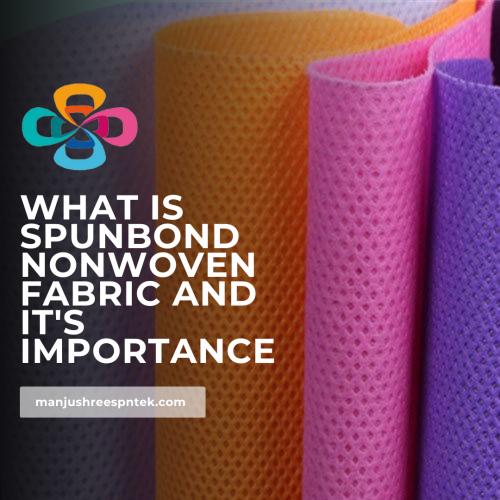What is Spunbond Nonwoven Fabric And It's Importance

Numerous factors point to the market for spunbond nonwoven fabric expanding quickly in the years to come. According to a survey, the worldwide textile sector would rise significantly by 8.3% by the year 2027, rising from 12.75 billion in 2019 to 23.33 billion in 2027. There are several factors contributing to the anticipated increase, but in order to fully grasp spunbond nonwoven fabric's rising notoriety and significance within the market, it is essential to comprehend what it actually is.
What is Nonwoven Fabric?
Nonwoven fabrics are those that are made exclusively from fibers. This fiber does not need to be turned into a yard in order to generate the finished product, unlike woven fabrics. On the other hand, to make them, thin fibers are laid out in sheets and then knitted together to create cloth. Mechanical, Chemical, and heat or fluid treatment are all options for bonding. There are numerous ways to make nonwoven. Spunbond is one of the most important methods for creating unwoven materials.
The following is a discussion of some key nonwoven production processes:
Melt-blown Fabric
Polymer fibers are used in the production of melt-blown fabrics. The spunnet of holes in which the molten fibers are expelled is called a spinnet. Extrusion of the material results in sheet-like stretching. The stretched fibers are then transformed into melted cloth rolls after being cooled by hot air.
Masks, air filtration cloths, PPE kits, liquid filtration equipment, oil-absorbing textiles, shoe liners, tea bags, cleaning cloths, bags, and other items can all be made from melt-blown fabric.
Spunbond Nonwoven Fabric
Nonwovens that have been spunlaid or spunbond can be produced continuously. The technique involves essentially spinning the fibers, which are subsequently spread out over a sheet with the use of thrusters. Spunbond produces low-cost products at faster belt speeds, making it a somewhat quicker method of making polymer nonwovens.
Staple Nonwoven Fabric
Another approach for creating nonwoven fabrics is using the staple method. Four stages are used to create staple nonwovens; The process of mixing comes after the fibers have first been spun and then put into bundles. The final product is created by spreading the mixed fibers over a conveyor belt and then weaving them together into a web. To create staple nonwovens, the resin or thermal bonding procedure is employed to bind the fibers. The methods discussed above are among the most well-known for creating nonwoven fabric. air-laid However, other techniques, like air-laid and wet-laid techniques, are frequently employed to create fabrics without yards.
Importance of Spunbond Nonwoven Fabrics
Nonwoven spunbond fabrics don't need to be sewn or produced in yards. The product is more easily manufactured than any woven cloth, which contributes to its price and longevity. Because of this, they are durable for consumers, fashion businesses, furniture manufacturers, the healthcare industry, and sanitary product manufacturers.
The significance of nonwoven spunbond textiles has increased significantly over time for a number of reasons, including
They are more resilient than any other kind of material due to their great tear strength. They are regarded as suitable for use as carrying bags due to their robustness.
Nonwoven spunbond fabrics are often biodegradable, making them suitable for usage in environmentally beneficial ways. Products like nonwoven bags can be recycled and used again and again.
The short manufacturing procedure makes them affordable for consumers to eat for a variety of reasons. Spunbond textiles are a good choice since they have superior physical characteristics compared to any other nonwoven material.
Layering the fabric increases its durability.
Additionally, polypropylene unwoven cloth has high tensile stability and flexibility and is very liquid-repellent.
The microorganisms that can damage fabric or fiber are protected from PP nonwoven.
The advantages listed above show why the spunbond nonwoven fabric market is expected to grow significantly in the future. Even today, due to the benefits of employing nonwoven goods, many manufacturers and industries have made the switch.
Post Your Ad Here
Comments